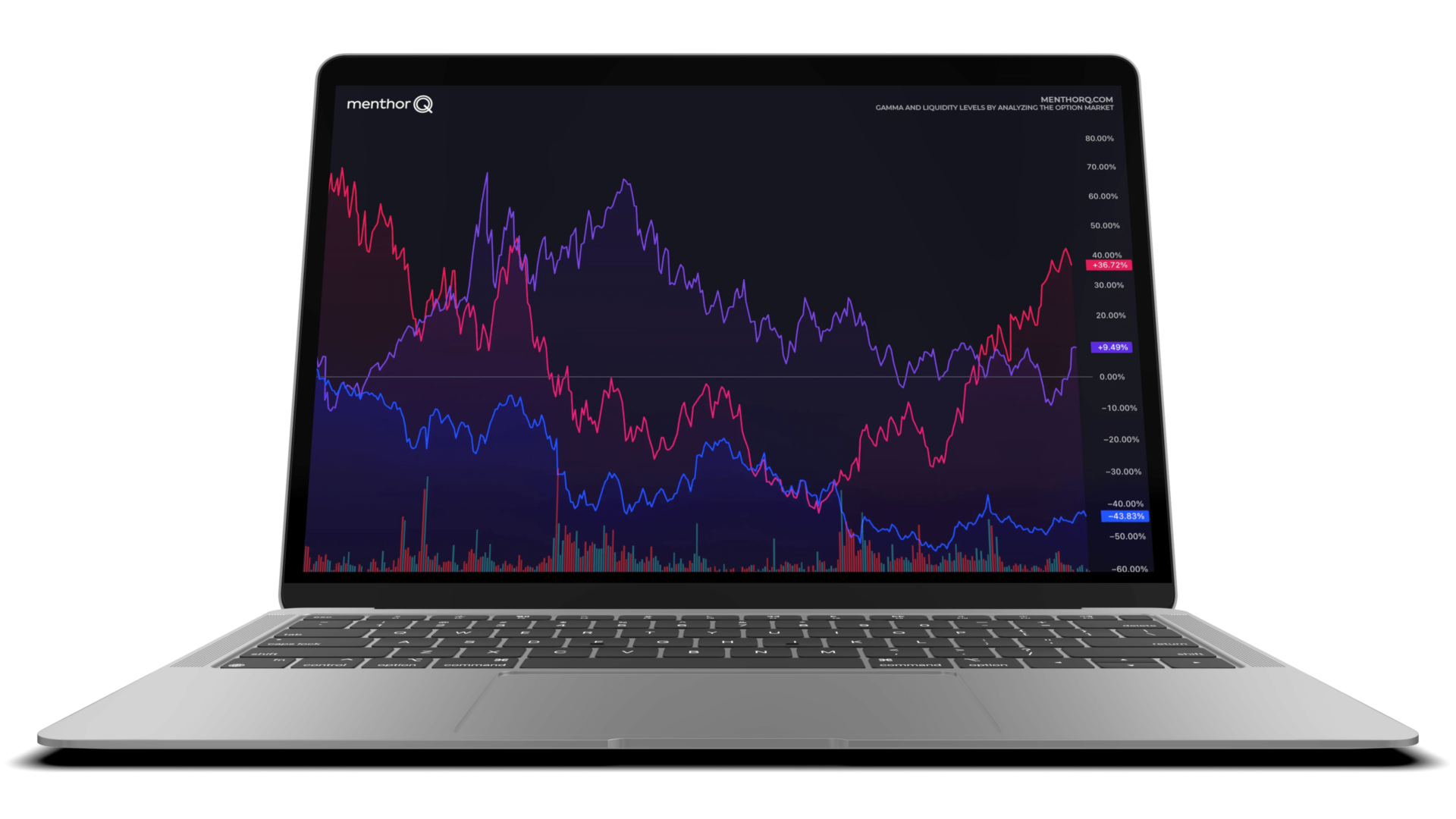This post comes from our Trade Structuring Channel where our Traders share their research and findings before the market opens. You can access the Channel within the Premium Membership via Discord.
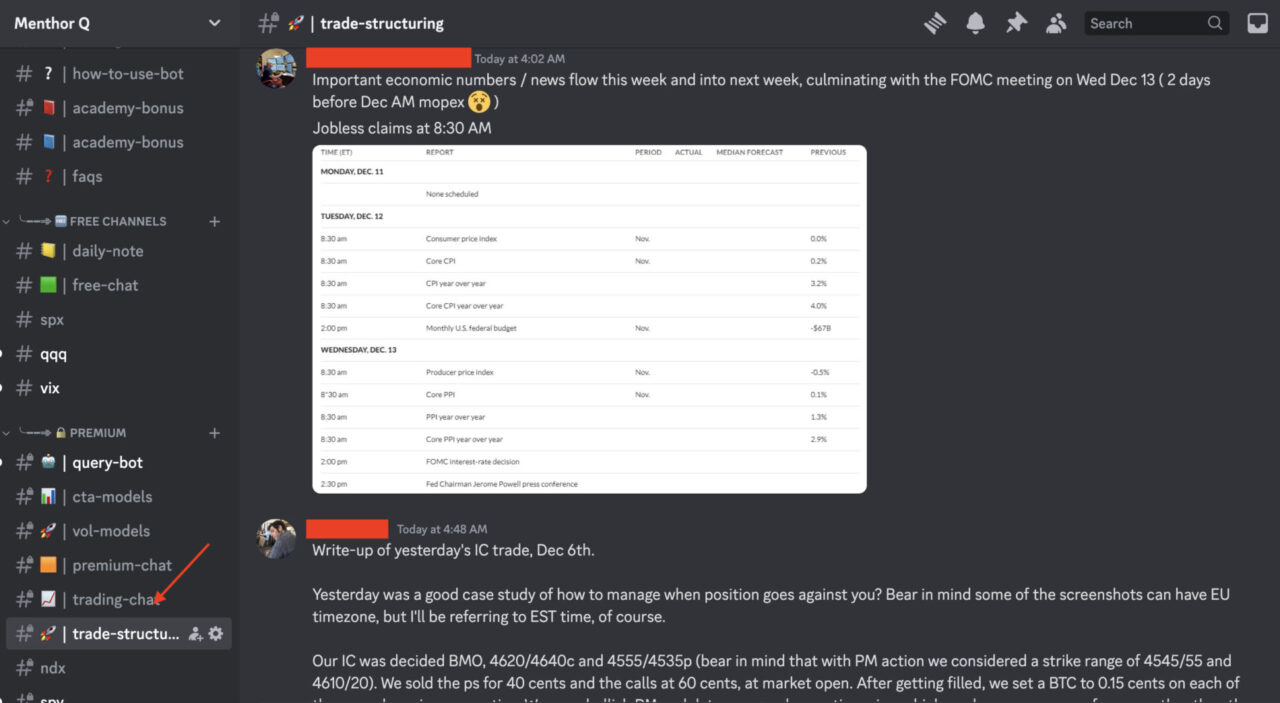
Join our Premium Membership.
Today we will look at how to manage a 0DTE SPX Iron Condor while the market pulls back and goes against you and the most important lesson for traders: Manage your Risk.
Despite the risk the team was still able to close the day with a $2160 profit and in green despite the market going against the trade.
An Iron Condor Strategy benefits from low volatility and the passage of time. The goal is to set levels on the Call and Put side and pocket premium if the price does not reach those levels. We have an article dedicated to the Iron Condor Strategy.
Now let’s do the analysis. The trade date is December 6th 2023.
Premarket Analysis
The Iron Condor strikes were decided before the market opened at 4620/4640 for the calls. In this case we wanted to sell the 4620 strike and buy the 4640 strike. On the put side we wanted to sell the 4555 and buy the 4535 strike. With an Iron Condor you can execute the structure in one trade or break it down and Sell a Put Spread and a Call Spread separately. We prefer this as it allows us to better manage our two sides during the day.
We sold the Put Spread for 40 cents and the Call Spread at 60 cents, at the market open. After getting filled, we set a Buy To Close Order (BTC) to 0.15 cents on each of the spreads, as per our practice. The key to success is not to pocket the full premium but to limit the risk and reduce the Time in Trade (TIT).
We were bullish pre market and data was good, narrative-wise, which made us more wary of our Call Spreads rather than the Put Spreads.
We start the day always by monitoring the Menthor Q Levels.
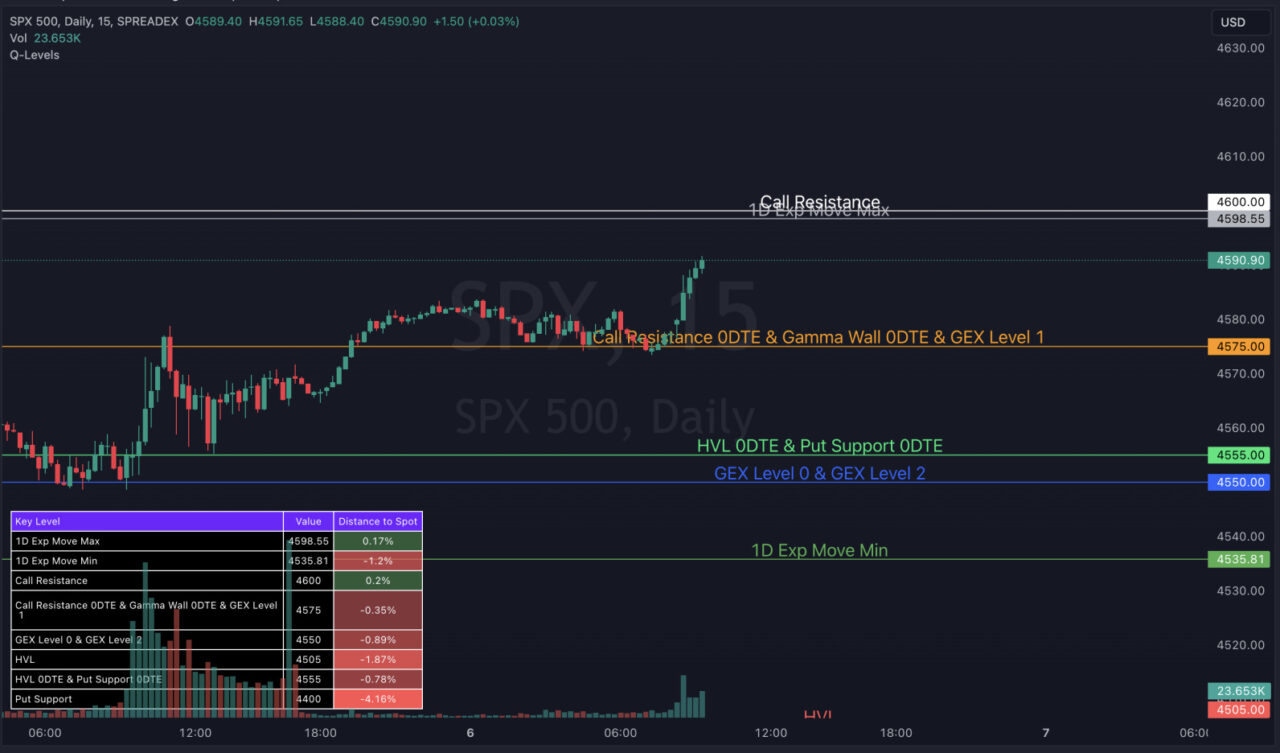
9.30 EST. The Market Opens
So once the trade got filled, the market started dumping. At this point, this benefited the Call Spreads, which were closed and had a Time in Trade (TIT) of about 30 minutes (see screenshots below). In this case we sold our calls at 60 cents and closed at 15 cents with a net premium of 45 cents or 75% of premium on the call side.

Now that we are out on the Call side, ideally, we would want the market to pull back and even rally to have the same positive outcome for the puts, but the market kept going down.
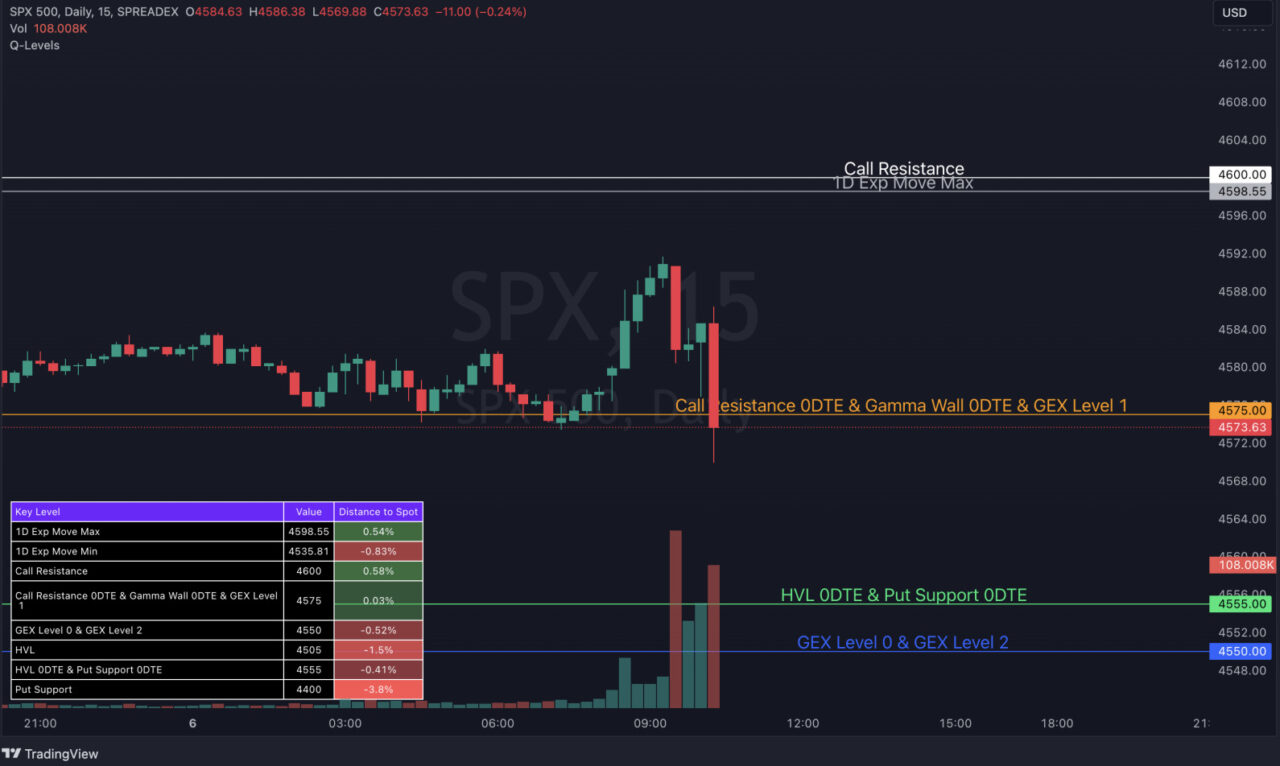
At this point in the trade, we start thinking about our short strike, 4555, which is the day’s 0DTE put support. A trader could have waited for a lower strike to fill, of course, but getting filled isn’t always as easy as it sounds. In any case, we now found ourselves sweating this second side of the position.
What do we do? Do we take the Loss? Do we not worry about it because we’re far from the level?
The first thing we like to do is look at targeting. We want to see where the Market Maker is pushing the price. For example, if we have ample evidence throughout the day that they “only want” 4570, say, it shouldn’t theoretically be an issue and we just wait it out, let the market do its thing and wait for theta and wait until we get filled out.
But what if we start seeing targeting at or below our strike?
That would put us at risk of losses. In an Iron Condor the maximum risk is the spread between the strike sold and the strike bought. In our example our spread was 20 points (4555-4535) which equals to a $2000 loss per contract.
In this screenshot, taken intraday, we can see the 4555 Put – our short strike, in a 1 min chart, showing volume of buyers/sellers.
So what we see here is roughly two big volatility signatures that amounted to about 3K contracts. Not very good for our position, because we don’t want the Market Maker to go there, of course. This is what we mean by targeting.
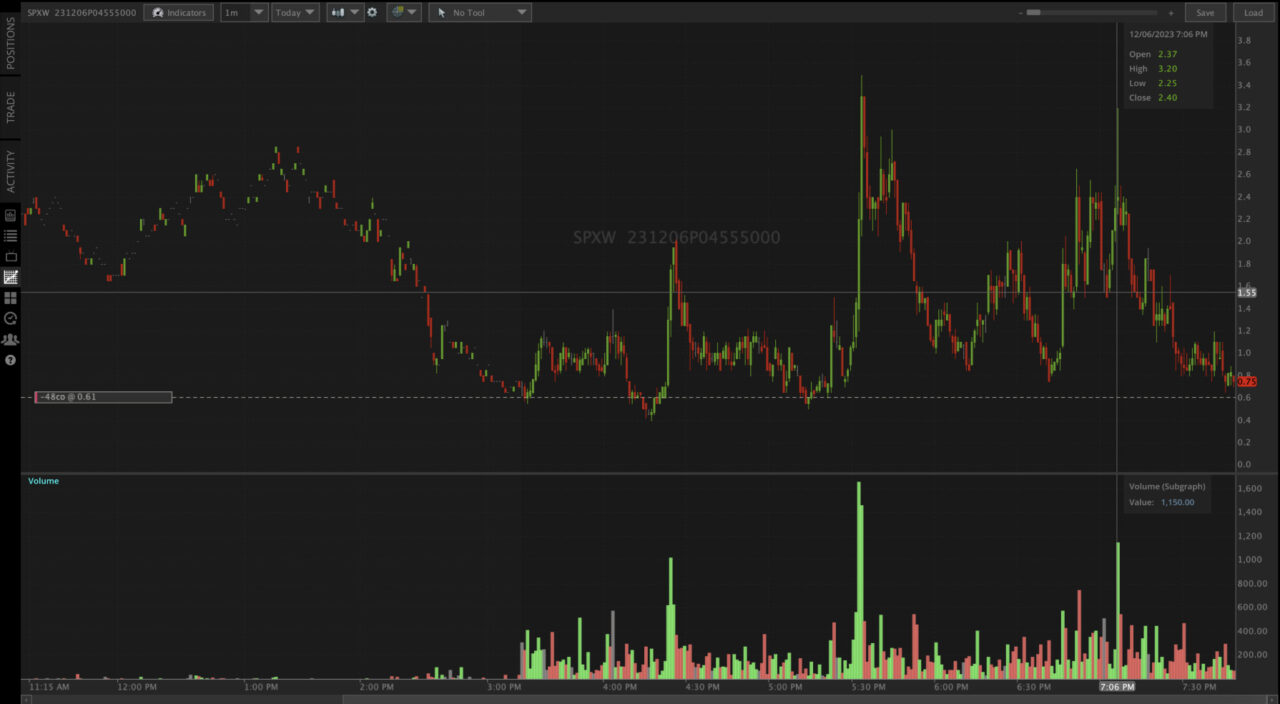
Source: TastyTrades
12.00 PM. So what now?
In this case, if we clocked around 3K contracts, we want to see the same signature on a dump to indicate that they are jumping out of those contracts. What we also want to see is whether they are rolling down or closing this put at a profit and then getting into lower strikes, for continuation which would be very negative for our put spread.
In this screenshot, right before lunch, we started getting some relief. We were still “far” from the 4555 strike, but we can’t be complacent, of course. With a new Low of Day set just before, and with targeting awfully close to 4555, we didn’t like this trade anymore and started thinking of exit strategies.
The question was also to the upside: were we seeing targeting to the upside? Perhaps a buyer would come in to sweep up, say, 4575 in large numbers and we’d rally and trap the bears? That can always happen as well. We started looking at 4575c, 4570c, etc. — the usual intraday detective work. We did not find anything bullish though, which upheld our intraday bearish thesis.
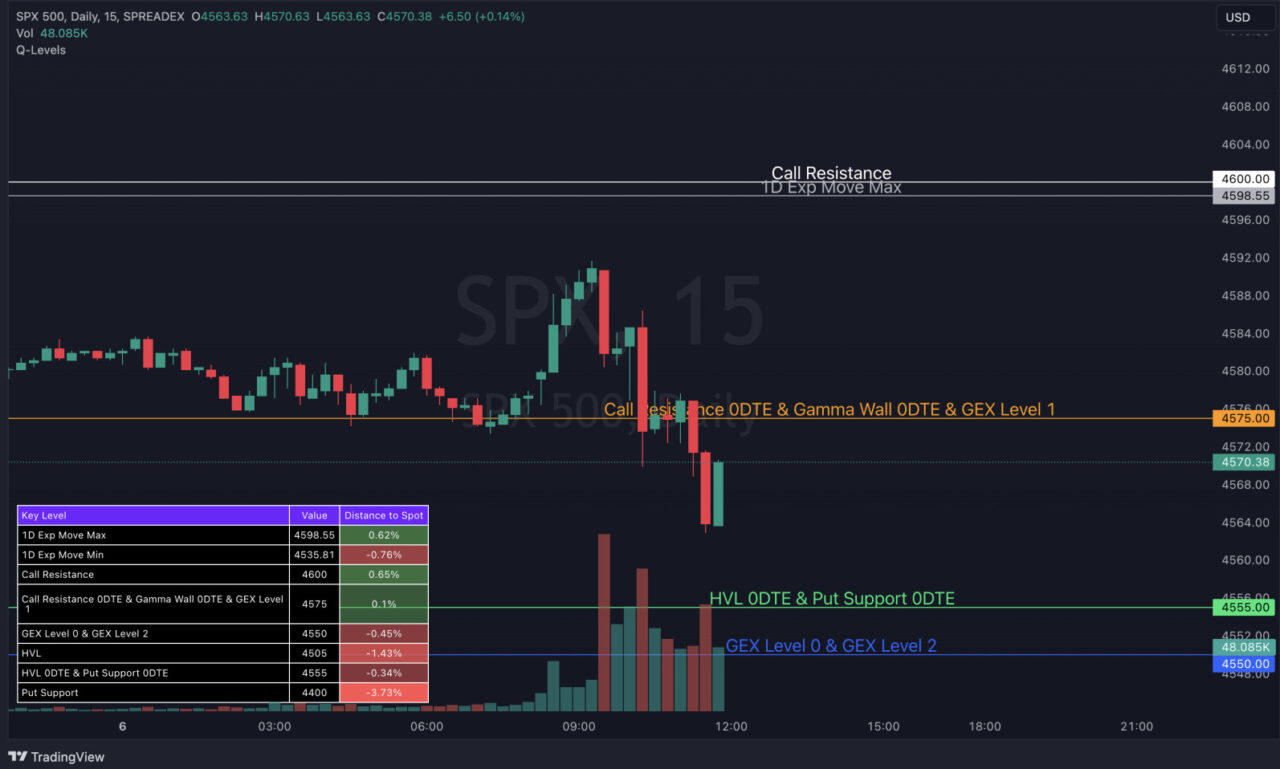
The Power Hour
Another thing to worry about is power hour.
Experience told us that if this turned into a trend day, a bearish trend day, we now want to use any parachute we have to get out of that position. Remember, we’re already very green on the call spread, which offset put spread loss, provided the market gives you a solid respectable out, which it did. Market, if you know how it rolls, always gives you a parachute to get out before getting “rekt” – a common term for 0DTE retail traders who don’t know when to call it quits.
In this screenshot above, we rallied up a bit. Now we know targeting was against us, either at our strike or below. The Put Spread we originally sold for 40 cents was now at break even (after spending a long time showing red, VERY much red – we were waiting for price to settle after trending move to see what that would bring, hopefully/potentially some relief to upside to limit losses etc.).
So we decided to take the parachute and enjoy our green day (thanks to the call spread). This is where we exited.
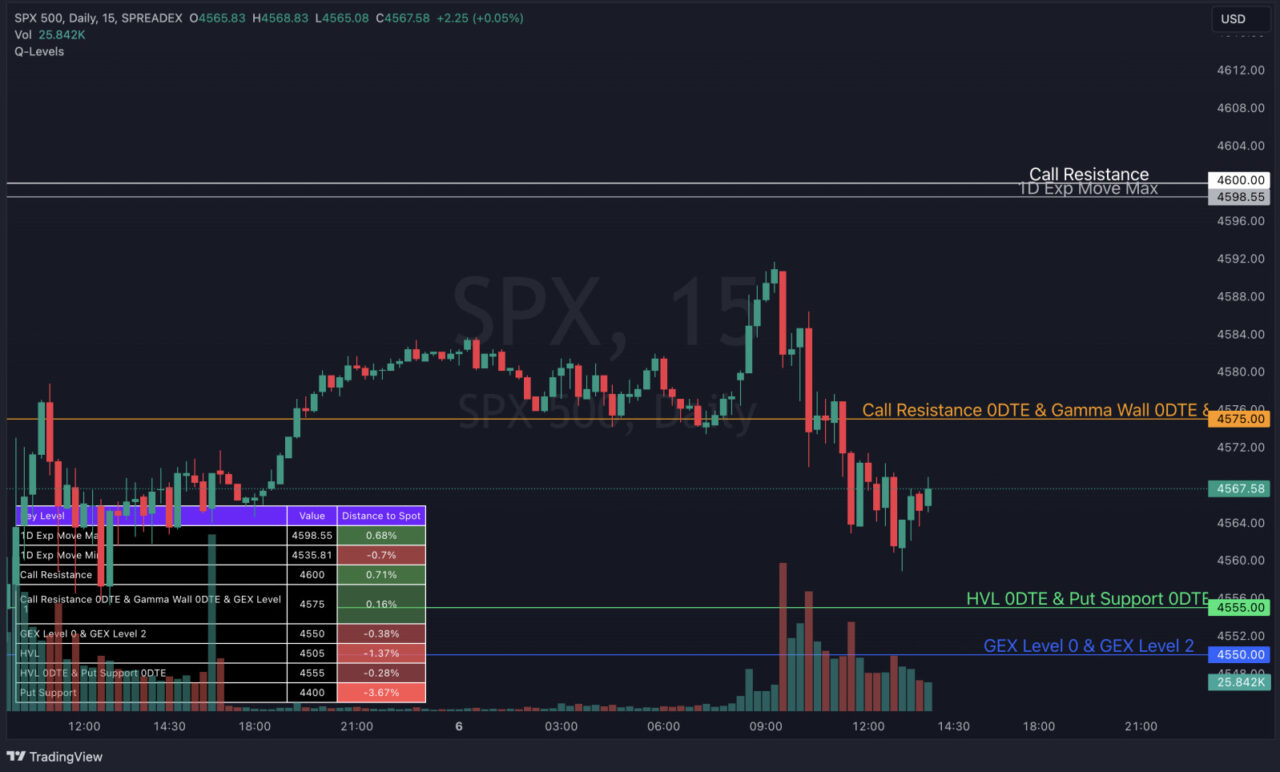
This is the fill at break even.

Market Drops
Soon after we got out of the position, the market started dumping hard, as expected. Not only did it violate our original 4555p, but it went right to 4550p (back to the scene of the big gamma crime, yes, again), but it even closed under it by a point.
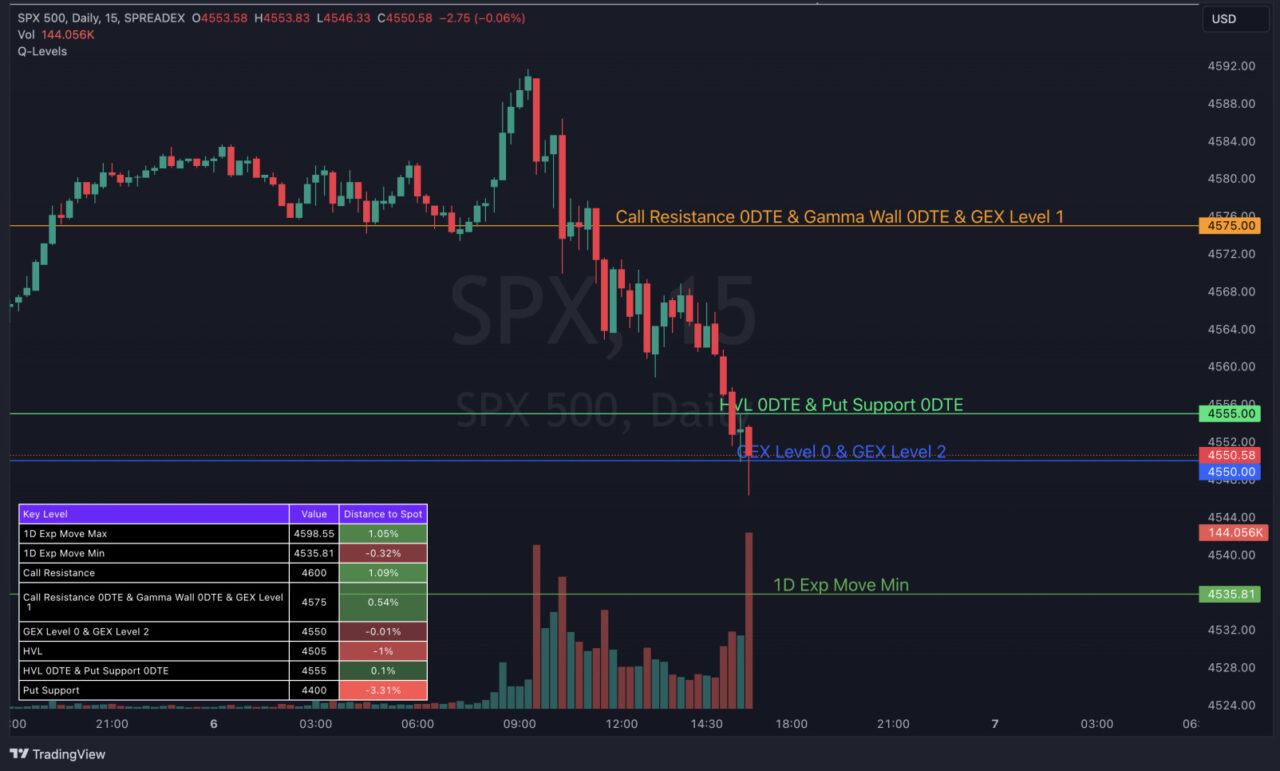
This was the final profit for the day after many hours of fear.

Join our Premium Membership to access our Data and Insights.
Join us today and unlock the power of Options
